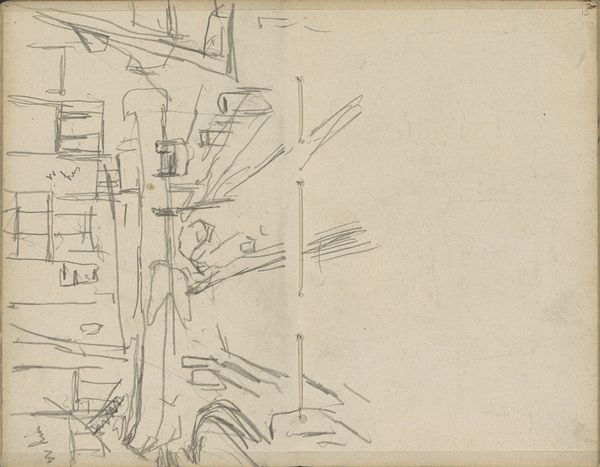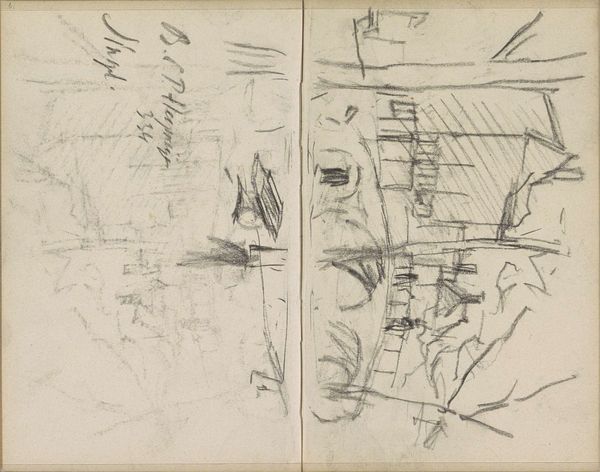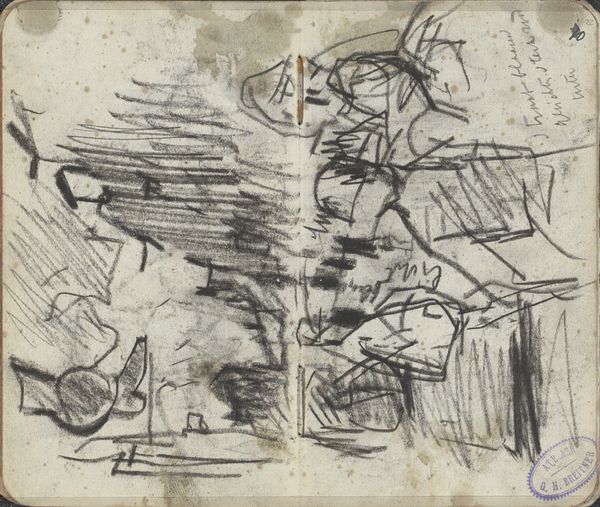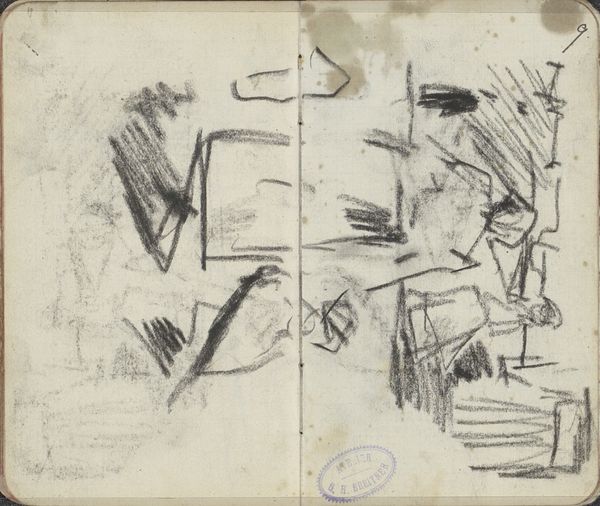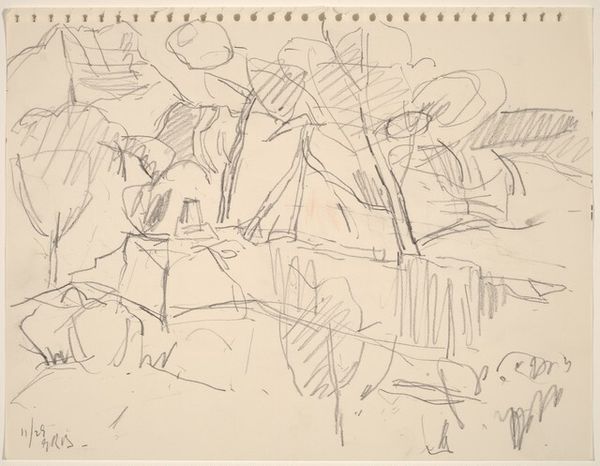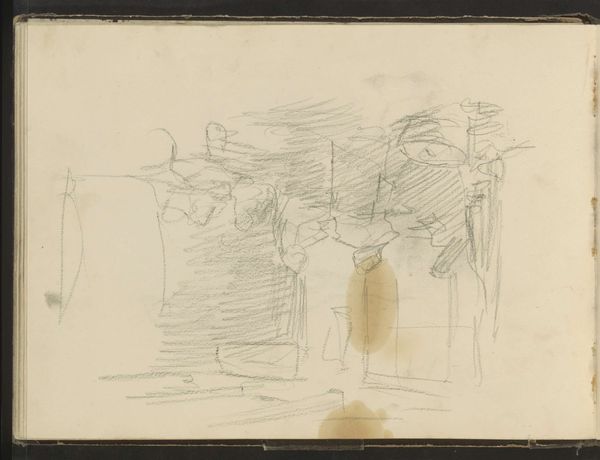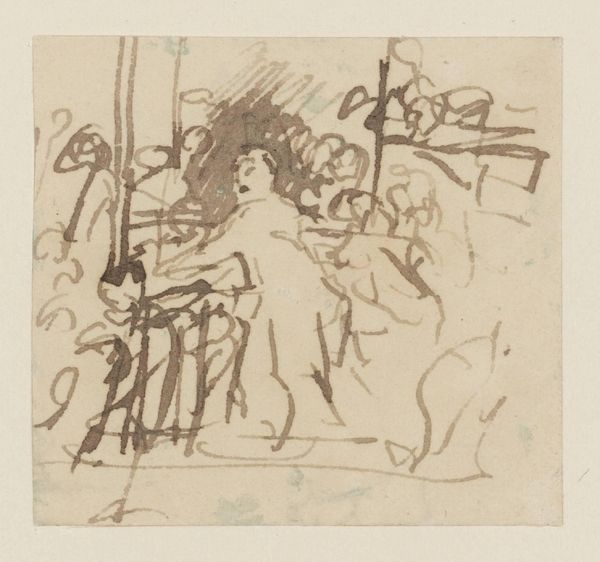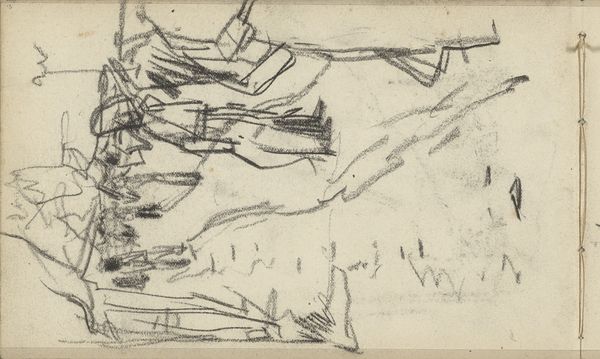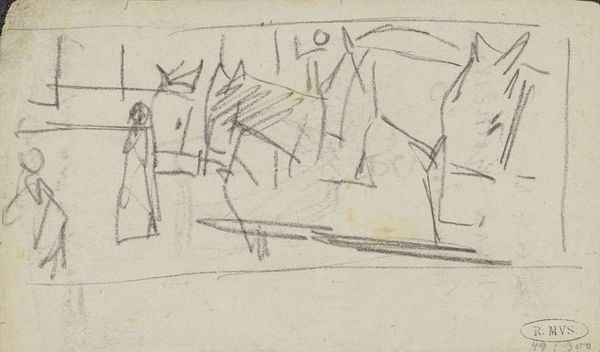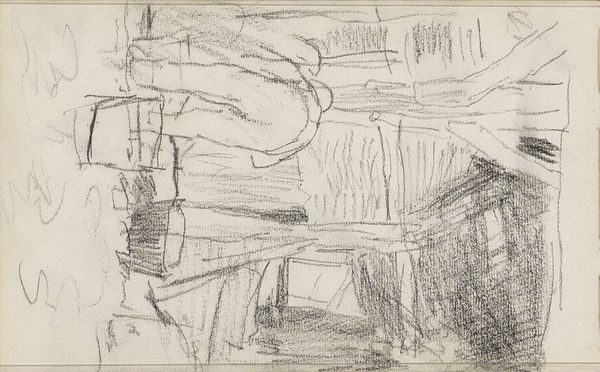
Skizze von drei Tricktrackspielern um eine Tonne sitzend c. 1640 - 1641
0:00
0:00
drawing, ink, indian-ink
#
drawing
#
baroque
#
landscape
#
personal sketchbook
#
ink
#
sketch
#
indian-ink
#
watercolor
Copyright: Public Domain
Editor: This drawing, “Skizze von drei Tricktrackspielern um eine Tonne sitzend,” which translates to “Sketch of Three Backgammon Players Sitting Around a Barrel,” by Isaac van Ostade, created around 1640-1641, is done with ink and watercolor. The rapid, loose strokes give it an immediacy. How do you read these energetic marks? Curator: It is indeed striking how seemingly simple lines carry potent information. Van Ostade employs a visual language immediately recognizable: a group gathered, sharing space around a communal object. But what is truly remarkable is what this gathering around a barrel signifies in the Dutch Golden Age. Do you notice anything about their posture? Their clothes? Editor: They seem relaxed, absorbed. Their clothing is simple, not refined, indicating maybe working class. Curator: Exactly. Consider the barrel—a locus of trade, of sustenance, of perhaps illicit enjoyment. It serves as the fulcrum for a scene of everyday life. This connects to deeply rooted Northern European traditions around common spaces and shared narratives. In a way, the lines *themselves* act as a web, binding these figures, this moment, to the paper, echoing those larger societal links. Is this just a playful record or an echo of social cohesion? Editor: That’s a beautiful way to put it, that the lines themselves represent connection. I was focused on the ‘sketchiness’ but hadn't considered the deliberate choice in *what* he chose to sketch and what that signifies for the people it portrays. Curator: Yes! Even what appear as purely aesthetic choices often embed cultural information, stories passed down and made manifest again and again in imagery. Recognizing it gives depth. Editor: This has given me a totally new way of appreciating the layers of meaning in this unassuming drawing. Curator: For me too. It is humbling to decode some symbols and knowing others stay hidden.
Comments
No comments
Be the first to comment and join the conversation on the ultimate creative platform.
